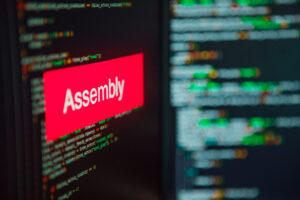Reduce IT Complexity by Centralizing Your IT Automation
Orchestration and automation platforms reduce IT complexity by enabling IT to integrate and manage diverse processes from a single pane of glass. Learn more.

Orchestration and automation platforms reduce IT complexity by enabling IT to integrate and manage diverse processes from a single pane of glass.
IT environments are increasingly complex as organizations shift their focus to digital transformation, and that complexity is holding organizations back.
Most organizations have at least 10 large application platforms that are critical to day-to-day operations. At the same time, large enterprises have, on average, 900 applications. It’s not surprising that 85% of IT organizations report that integration challenges are the biggest hurdle for digital transformation, according to a survey report from Mulesoft.
IT environments used to be monolithic. It used to be enough to rely on point solutions for scheduling, with custom scripts and in-house tools to automate processes between applications. But as environments become more distributed and diverse, those point solutions and custom scripts are becoming liabilities.
Organizations are accelerating their digital transformation initiatives to adapt to changing market and global conditions. These responses require innovative business processes that streamline data across complex environments, providing digital services directly to consumers. This can drastically increase the impact of IT errors.
For example, digital performance problems can quickly crash websites during surges in e-commerce traffic. Reliability and elasticity are key.
As environments continue to grow and diversify, IT organizations must implement solutions that centralize control of automated processes and systems.
Seamless integrations
To centralize control over automated processes, an automation solution must be able to connect to disparate tools across different technology systems. This can be accomplished in four ways.
- Platform-agnostic connectors for common IT tasks such as file transfers, database connections and software installations.
- Native integrations with popular platforms and applications from vendors like Amazon, Microsoft, Oracle, IBM and SAP.
- API adapters to provide extensibility to virtually any service, application or server.
- Custom scripts are rarely 100% avoidable. Automation solutions that are script-language independent make it possible for IT to integrate any script into end-to-end workflows.
According to Mulesoft’s survey report, organizations using APIs to connect endpoints were 69% less likely to report integration challenges.
API adapters make it possible to rapidly connect endpoints and third-party services. This is critical for automation environments that rely on cloud-based services and infrastructure, as well as for delivering digital services to consumers.
API adapters can also support a variety of content and authentication types and can include features such as testing, templates and wizards to streamline development.
As organizations add more third-party services to their tech stack, APIs will become a key asset for IT teams. Procurement should pay attention to automation tools that provide REST API adapters, with support for SOAP, WSDLs, .NET assemblies and command lines for legacy solutions.
The benefits of centralized control
With multiple schedulers and dozens of applications across the environment, tracking down a single log file to pinpoint the root cause of an issue can take an inordinate amount of time. If that issue requires a fix to a custom script, IT is tied up much of the day.
By running automated processes through a single platform, IT gains a single repository for logging, monitoring, alerting and reporting on those processes and associated applications.
For example, when SBA Communications consolidated its various schedulers and automation scripts, the IT staff was able to reduce the average mean time to resolution by 90% — from one hour to five minutes — by relying on centralized monitoring and logging.
There are endless benefits to controlling automated processes through a single pane of glass via, for example, a distributed job scheduler. It enables IT to accelerate the development of new workflows, reduces time spent fighting fires and facilitates the creation of innovative, end-to-end processes that meet business needs and end-user expectations.
Consolidating custom scripts and an in-house scheduling solution enabled Lamar Advertising to manage continuous, real-time data transfers, a key prerequisite for the digital billboards it needed to roll out.

Service Orchestration and Automation Platforms (SOAPs)
Not all automation tools offer the extensibility necessary to centralize and orchestrate processes, applications and IT infrastructure. RPA tools, for example, are designed to automate only rule-based tasks.
Orchestration is a new field, but there is a class of solutions that are particularly useful for centralized automation and IT architecture.
Workload automation software, like traditional job schedulers, enables users to schedule a variety of automated tasks. However, workload automation (WLA) solutions are not native to specific platforms — they are third-party platforms that offer a wide range of capabilities as well as the limitless extensibility needed to support business initiatives today and years down the line.
Gartner® differentiates advanced WLA solutions, or what they deem Service Orchestration and Automation Platforms (SOAPs), from traditional job schedulers and legacy automation tools.
“SOAPs enable infrastructure and operations (I&O) leaders to design and implement business services. These platforms combine workflow orchestration, workload automation and resource provisioning across an organization’s hybrid digital infrastructure. Increasingly, they are central to an organization’s ability to deploy workloads and to optimize deployments as a part of cost and availability initiatives. SOAPs expand the role of traditional workload automation by adapting to use cases that deliver and extend into data pipelines, cloud-native infrastructures and application architectures. These tools complement and integrate with DevOps toolchains to provide customer-focused agility, cost savings, operational efficiency and process standardization.”
– 2024 Gartner® Magic Quadrant™ for SOAPs report
Deploying a centralized automation platform
Automation and orchestration platforms are designed to consolidate schedulers, automation tools and custom scripts. That said, vendors sometimes offer automated migration tools that make it simple to transform existing files, jobs and objects so they can be loaded into the new solution.
Additionally, some automation vendors provide licensing models that allow users to deploy their licenses either on-premises or in a public or private cloud. Vendors will even allow IT to redeploy their licenses to different machines, IT systems or locations (on-prem/private cloud/multi-cloud), giving IT teams the flexibility to easily adapt to changing demands from business units.
Preparing IT for long-term success
Many organizations are pushing to improve and, in some cases, recreate the customer experience to adapt to modernization pressures. Because so many customer interactions now exist in a digital space, CIOs are looking for new ways to streamline data management processes to provide data to customers and employees in real time, as well as boost application performance.
Business models are always changing, and business operations are always evolving. IT departments, if they aren’t already, will need to be able to integrate and orchestrate a variety of new technologies, from big data and artificial intelligence to microservices and data centers housed in cloud environments. Begin revamping your IT automation with the power of a SOAP. Redwood Software was named a Leader in the 2024 Gartner® Magic Quadrant™ for SOAPs. Get the full analyst report to learn why.
Ready to simplify your data warehousing with workload automation?
Schedule a demo to watch our experts run jobs that match your business requirements in ActiveBatch. Get your questions answered and learn how easy it is to build and maintain your jobs.







